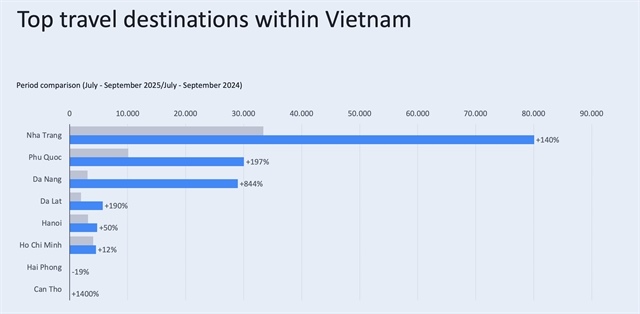Three scenarios for national economy in 2013
Three scenarios for national economy in 2013
Economists have outlined three alternative scenarios for the national economy in 2013, each extrapolated from the hypothetical GDP growth rates of 5, 5.68 and 6.34 percent.

The 5.68pct growth scenario most likely
Economists say an export-driven economy like Vietnam will continue to be subject to the vicissitudes of the global market.
Dr Do Van Thanh, deputy director of the National Centre for Socio-Economic Information and Forecast (NCEIF), explains that recoveries in the European and US economies would fuel Vietnamese export growth. Sluggishness in the Chinese and Indian economies would give Vietnamese exports a competitive advantage, especially as Vietnamese labour and input costs are between 2-2.5 times less than both countries.
Vietnam’s 2013 foreign direct investment (FDI) and official development assistance (ODA) flows are expected to be more lucrative than in 2012, stimulating its economy.
However, the negative impact of the global economic downturn is still lingering on. The Japanese economy, which is forecast to slow further in 2013, will affect the Vietnamese economy. Japan is not only one of Vietnam’s three biggest trade partners, but also one of the country’s largest foreign investors. Its economic difficulties will detract from the influx of foreign direct investment into Vietnam.
Although Europe and the US are showing green shoots of recovery, the reactive domestic market safeguards they are applying on trade will be the biggest obstacles to Vietnamese export expansion. Global demand is expected to remain stable as foreign markets maintain import caution.
The three 2013 economic scenarios extrapolated by NCEIF experts are based on Government forecasts, the national economy’s internal orientation, and reports by international organisations.
The first scenario posits the Vietnamese economy would grow by 5 percent, provided the global economy grows by 2.8 percent and development investment capital rises 5.5 percent. MSc Pho Thi Kim Chi, a member of the NCEIF research group, explains that Vietnamese exports to major markets like the European Union, Japan and the US would be curtailed by the slow recoveries of these economies.
The second scenario concludes Vietnam’s GDP would increase by 5.68 percent, including a 16.3 percent jump in exports if the global economy grows by 3.3 percent, and development investment capital rises 11 percent. In this scenario, the Eurozone emerges from its crippling bad debt crisis, the political tensions arising from sea and island sovereignty disputes ease, the US economy recovers substantially, and the Japanese economy perpetuates 2012’s stabililty.
For the third scenario, Vietnam’s economy would see a GDP growth rate of 6.34 percent in addition to the 16.3 percent export increase. This hypothetical is based on the steady recovery of the global economy.
The research group has concluded the second scenario is the most likely to eventuate in 2013.
Five key tasks
The research group has made a number of suggestions based on its second scenario as follows:
Firstly, the government should continue with its focus on stabilising the macroeconomy, keeping 2012’s inflation rate, and applying a tight but flexible monetary policy. Effective measures are needed to increase the efficiency of investment capital and accelerate economic restructuring, especially in the State-owned sector.
Secondly, business production must be revamped and refreshed. This can be achieved through tax and fee exemption policies, domestic consumption stimulation with a focus on middle- and low-income earners, and domestic capital mobilisation for economic growth.
Thirdly, the property market need defrosting. Non-performing debts should be settled, especially those plaguing the banking system. Bank restructuring must energetically push ahead, not only to ease the bad debt crisis but also to make the credit market healthier and support business access to loans.
Fourthly, the government should implement complementary land and investment policies to capitalise on the shifting of capital flows from China and India to ASEAN member countries. It needs to identify priority investment areas and abolish outdated technology projects.
Last but not least, the government cannot delay business restructuring, especially in relation to State-owned enterprises. Capital loss can be reduced, and a healthy and equitable environment created for all economic sectors.
vietnamnet

























